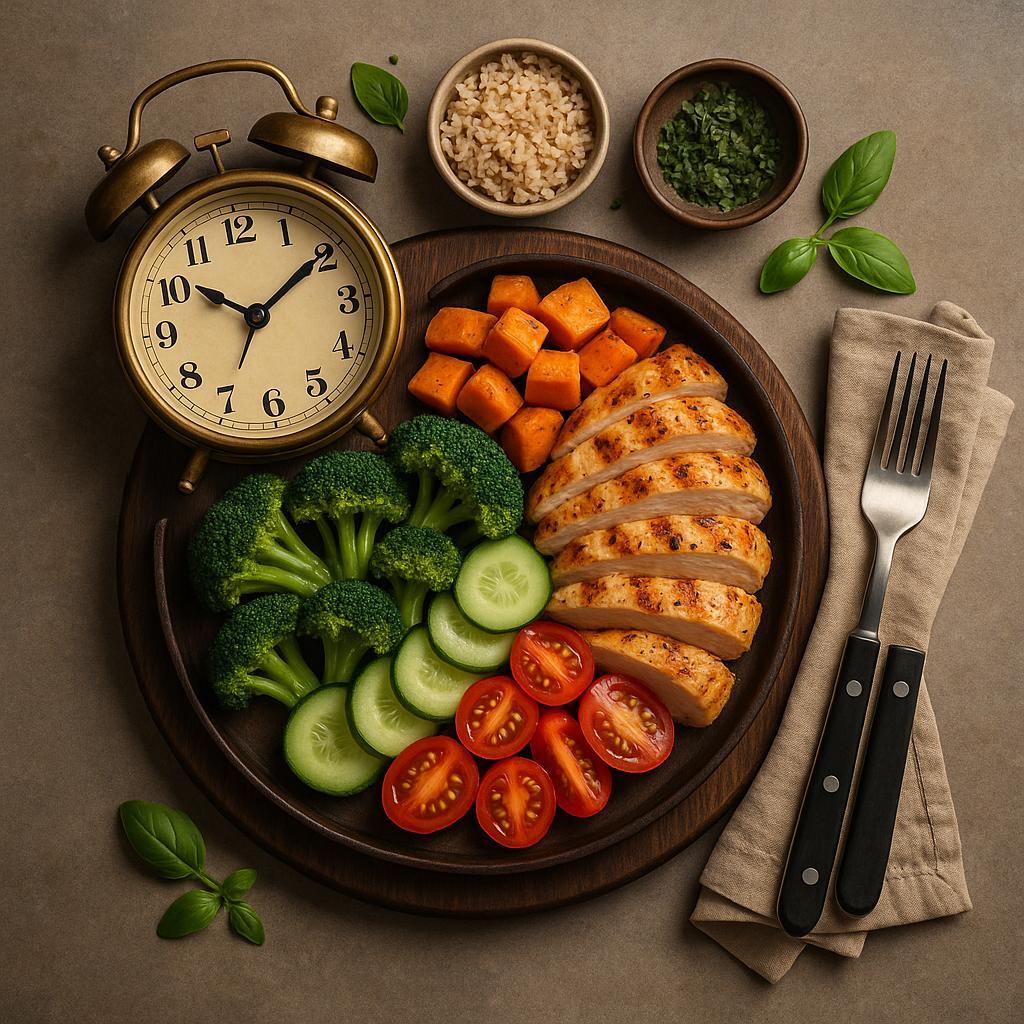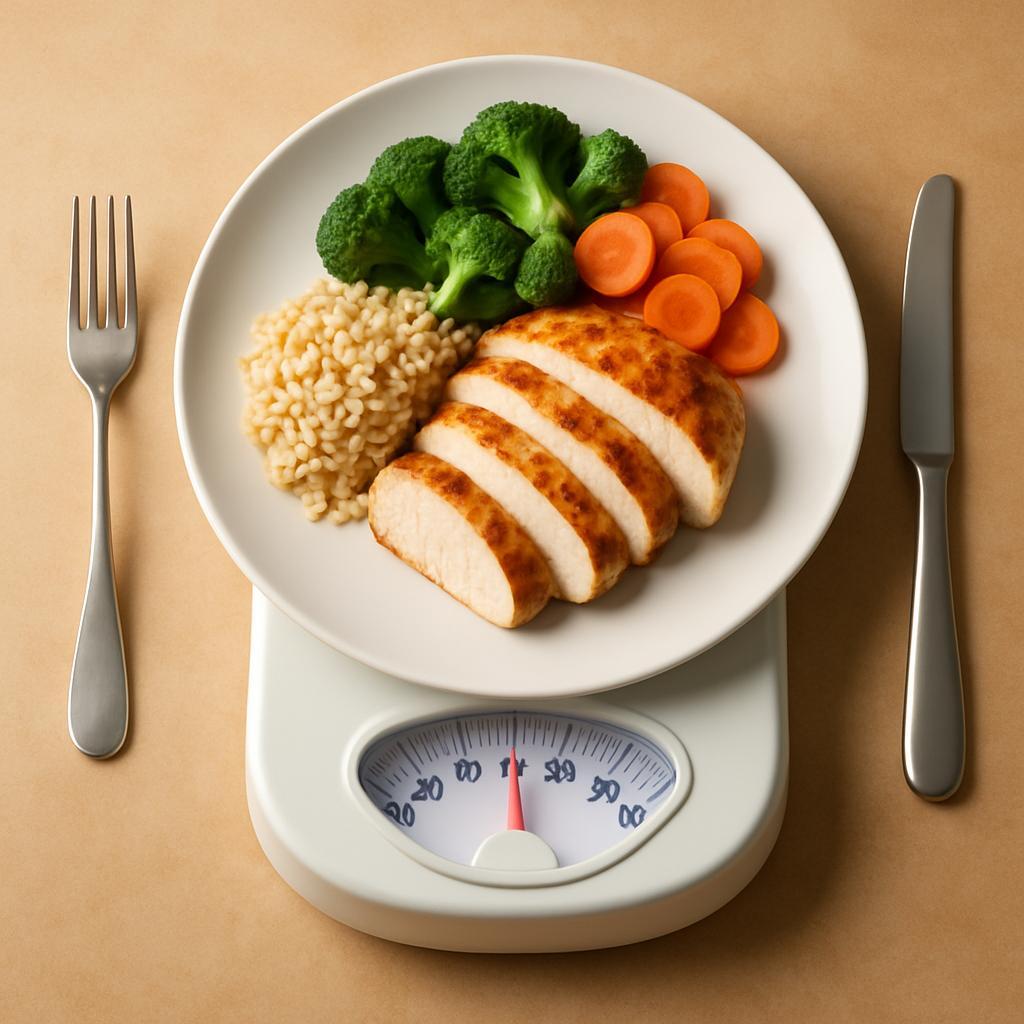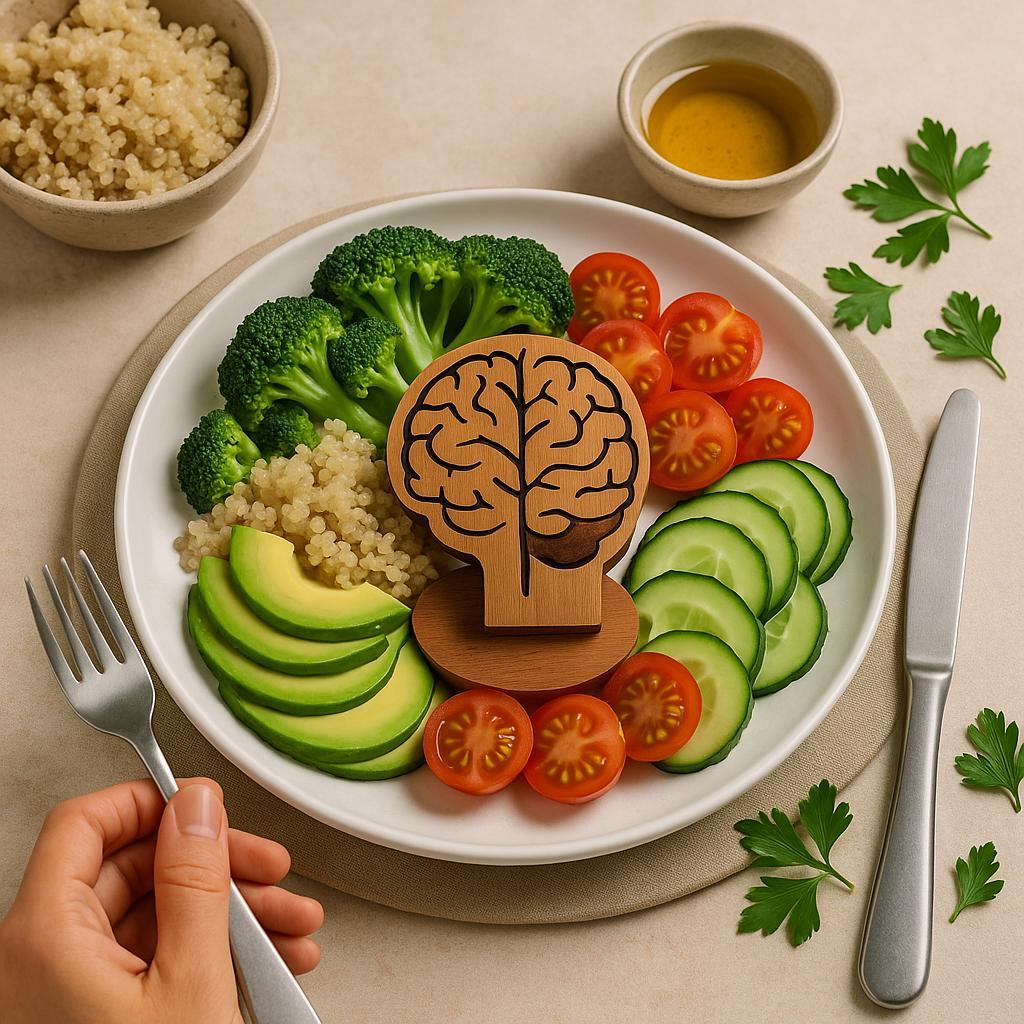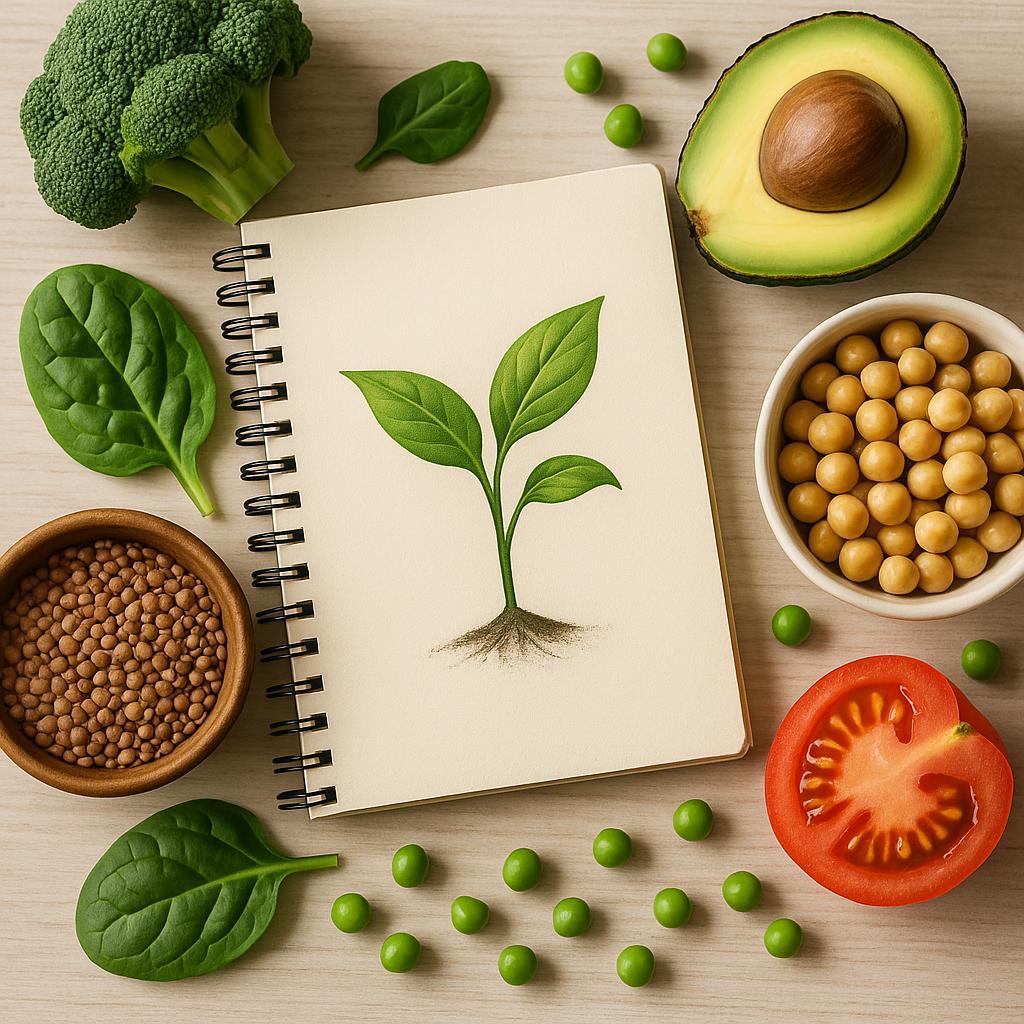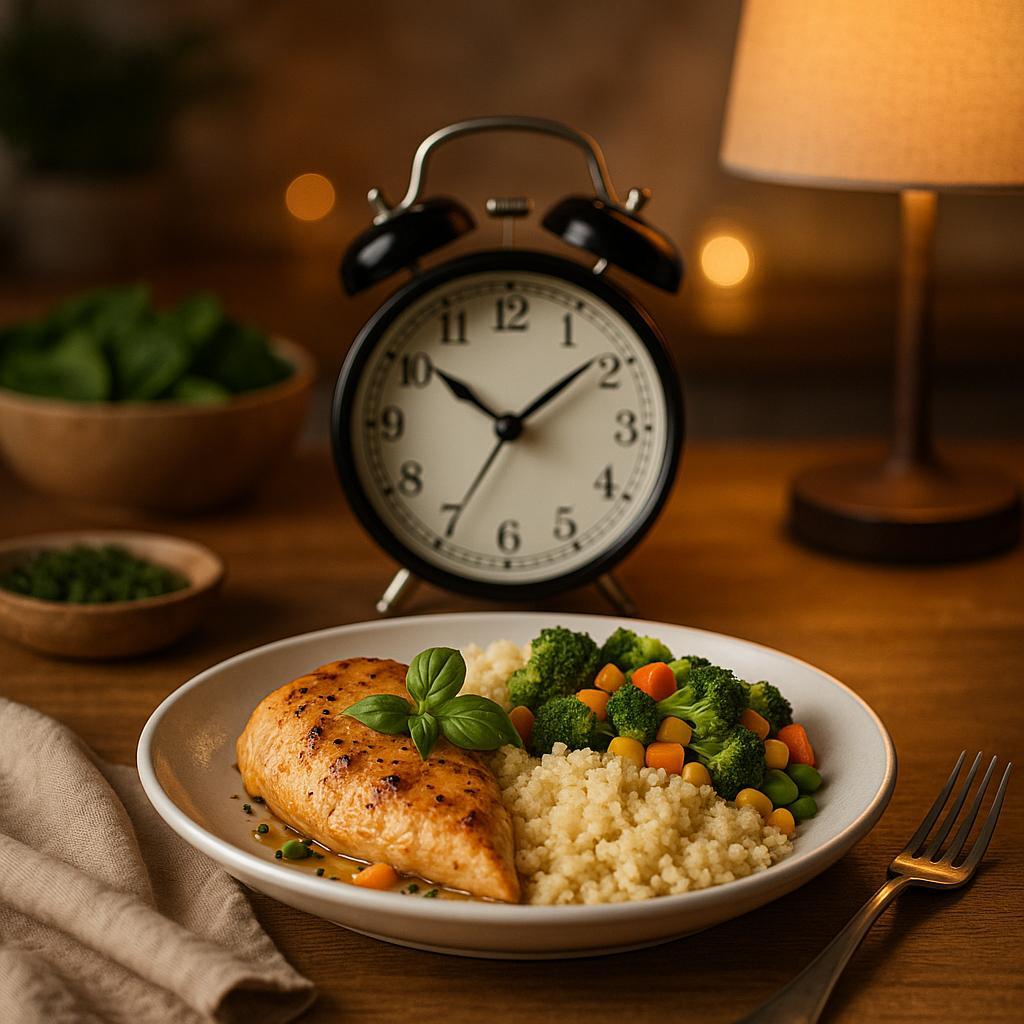Science-Backed High-Protein Meal Plan for Lean Muscle

Muscle doesn’t grow in the gym-it grows at the table. Training sparks adaptation; nutrition determines how much you keep. If your aim is lean, defined muscle, a high-protein approach grounded in research can accelerate recovery, enhance satiety, and support performance without guesswork. This guide turns evidence into everyday eating-clear protein targets, practical portions, and meals built from accessible foods-so you can fuel progress consistently, not perfectly. No hype, no extremes, just structure that respects both physiology and a busy schedule. Read on to see how a science-backed plan can align your plate with your goals, one purposeful meal at a time.
Table of Contents
- What Science Says About Protein For Lean Muscle
- Evidence Based Macros That Fuel Progress Without Bulking
- Smart Meal Timing To Maximize Growth And Recovery
- Simple Prep And Shopping Strategies That Keep You On Track
- Q&A
- The Way Forward
What Science Says About Protein For Lean Muscle
Research consistently shows that building lean muscle hinges on hitting enough total protein each day and distributing it smartly across meals. For most active adults, a daily intake of 1.6-2.2 g/kg body weight maximizes muscle protein synthesis (MPS); during a calorie deficit-especially when already lean-intakes of about 2.4-3.1 g/kg better preserve muscle. MPS is dose-responsive per meal up to roughly 0.3-0.5 g/kg (often 25-40 g for many people), mainly because this typically delivers the 2-3 g leucine “trigger” that turns on MPS. High-leucine proteins like whey, dairy, eggs, and lean meats reach this threshold efficiently; plant-forward eaters can hit it too by using larger portions or strategic blends (e.g., soy or pea paired with grains), or by selecting fortified options. Spreading protein over 3-5 meals about 3-4 hours apart outperforms skewed patterns, and while a pre- or post-workout meal within ~1-2 hours helps, total daily protein and per-meal leucine are the main drivers. MPS appears to plateau beyond ~40-50 g protein in a single sitting for most, so think “enough, often,” not “all at once.”
Quality and context matter too. Fast-digesting proteins (e.g., whey) elevate MPS quickly-handy around training-while slower proteins (e.g., casein) can sustain amino acid delivery; a 30-40 g casein serving before sleep has been shown to support overnight recovery. Protein’s higher thermic effect (~20-30%) and strong satiety also aid body recomposition by supporting a modest calorie deficit without excessive hunger. Carbohydrates still help performance and recovery, so pair protein with carbs around lifting to train harder and signal the body to build. For a practical picture: a 70 kg lifter typically thrives on 110-150 g protein daily (more when cutting), with meals providing 25-35 g protein each plus leucine-rich sources; older lifters may benefit from the high end of those ranges. In healthy individuals, high-protein diets show no harm to kidney function, but anyone with existing renal or metabolic issues should consult a clinician. Combine this nutrition framework with progressive resistance training, sleep, and hydration, and you have the evidence-based core of a lean-muscle plan.
Evidence Based Macros That Fuel Progress Without Bulking
Build your plate around macro targets proven to grow strength and preserve leanness while keeping the scale steady. Anchor protein at 1.6-2.2 g/kg/day (up to 2.4 g/kg during a cut) to maximize muscle protein synthesis, set fats at 0.6-1.0 g/kg to support hormones and satiety, and fill the rest with carbs, typically 2-4 g/kg depending on training volume and steps. Translate grams to calories using 4/4/9 (protein/carbs/fat) and aim for a weekly average weight change between −0.25% and +0.25%-the sweet spot for recomposition. Example for a 70 kg lifter training 4 days/week: 150 g protein, 70 g fat, 275 g carbs (~2,330 kcal) supports progress without spillover weight. Percentages are blunt; grams per kilogram are precise, scalable, and easier to adjust.
Distribute protein evenly-about 0.3-0.4 g/kg (25-40 g) per meal across 3-5 sittings-to repeatedly cross the leucine threshold and keep synthesis elevated. Time carbs to training for performance and recovery: 0.5-1.0 g/kg in the 1-2 hours pre-lift and again within 2 hours post, paired with 20-40 g protein; keep fats moderate in those meals for quicker digestion. Use high-fiber, minimally processed carb sources and target ~14 g fiber per 1,000 kcal for appetite control. Review a 7-day weight trend and training logs weekly; if weight rises >0.25% for two weeks, trim 20-30 g carbs or 5-10 g fat; if it drops >0.25% and lifts stagnate, add 20-30 g carbs on training days. Keep fats above 0.6 g/kg, maintain protein, and let carbs flex with activity-small, data-driven tweaks keep gains lean.
Smart Meal Timing To Maximize Growth And Recovery
Center your day around training with deliberate protein “pulses” and carb placement. Target 0.3 g/kg protein every 3-4 hours to repeatedly trigger muscle protein synthesis, and hit the leucine threshold (~2-3 g leucine per meal; think whey, chicken, or Greek yogurt). For the main pre‑workout meal (90-180 minutes out), pair 0.3 g/kg lean protein with 1-2 g/kg low-to-moderate GI carbs plus a thumb of fats to stabilize energy. If the last meal was >4 hours ago, add a top‑off snack 15-30 minutes pre-lift: 15-25 g whey and 25-40 g easy carbs (e.g., ripe fruit, rice cakes), 500-750 ml water, and a pinch of salt for better pumps and performance. Early-morning lifters can swap the meal for 10 g EAAs or 20 g whey and a small banana; for sessions >75 minutes, sip 10-20 g EAAs with 20-30 g highly branched cyclic dextrin to curb breakdown without gut heaviness.
Post‑training, the window is wide-but don’t waste it. Within 0-2 hours aim for 0.3 g/kg high‑leucine protein and 1-1.2 g/kg carbs to accelerate glycogen resynthesis; add 3-5 g creatine and a little sodium. If you train at night, finish the day with 30-40 g slow‑digesting casein (or thick Greek yogurt) to sustain overnight recovery; include 10-15 g carbs if stress runs high to blunt cortisol. Keep daily rhythm consistent-4-5 feedings, evenly spaced, and avoid gaps >5 hours. On rest days, hold protein timing steady and shift more carbs toward steps, mobility, or earlier in the day, pairing fats with non‑training meals for steadier blood sugar. Quick math: a 70 kg lifter shoots for ~20-25 g protein per pulse, 70-140 g carbs pre‑lift, and 70-85 g carbs post‑lift; hydrate with 3-7 ml/kg about 4 hours pre‑session and replace ~1.5 ml fluid per gram of body mass lost after.
Simple Prep And Shopping Strategies That Keep You On Track
Make the week effortless by choosing a simple “2+1” protein framework: pick two animal proteins (e.g., chicken breast and 93-99% lean turkey) and one plant protein (tofu, tempeh, or lentils). Batch-cook them on one prep day using fuss-free methods-sheet-pan roasting, pressure-cooking, or air-frying-then portion into containers that deliver 25-35 g protein per meal. Brine lean meats for juiciness, press tofu for better texture, and season everything with two versatile blends (citrus-garlic and smoky-chili) to keep flavors rotating without extra work. Cook a pot of whole grains and a tray of high-fiber veggies to mix-and-match, and prep a few “protein accelerators” like hard-boiled eggs, sautéed shrimp, or a tub of cottage cheese so any plate can hit your protein target fast. Pre-log three go-to meals in your tracker, label containers by protein grams, and stock a grab-and-go bin with ready items-Greek yogurt, edamame, jerky, and pre-cut fruit-to stay consistent on busy days.
Shop with a short core list that balances protein density, price, and convenience: chicken breast, lean ground turkey, eggs, extra-firm tofu/tempeh, canned tuna/salmon, Greek yogurt (unsweetened), cottage cheese, edamame, and dry or shelf-stable lentils. Add frozen veggies and steamable grains for instant sides, plus flavor boosters that don’t spike calories-mustard, hot sauce, salsa, low-sugar marinades, citrus, and fresh herbs. Read labels with a quick rule of thumb: dairy snacks ≥18 g protein and ≤6 g sugar per serving; deli items ≤400 mg sodium per 100 g; jerky with minimal added sugar. For a budget edge, compare protein per dollar (canned fish, eggs, and lentils win often), buy in bulk, and portion with freezer bags or a vacuum sealer. Keep “emergency” shelf-stables-tuna pouches, beans, whole-grain wraps-and a quality whey or pea isolate for days you’re short on time. When temptation hits, a pre-planned high-protein convenience meal (rotisserie chicken skin removed, pre-cooked lentils, bagged salad) keeps momentum without derailing macros.
Q&A
How much protein do I actually need per day for lean muscle, and how should I split it across meals?
Most lifters build lean muscle well at 1.6-2.2 g of protein per kilogram of body weight per day (about 0.7-1.0 g/lb). Distribute that across 3-5 meals, aiming for roughly 0.25-0.55 g/kg per meal (often 20-40 g) to hit the “leucine threshold” of about 2-3 g per meal that maximally stimulates muscle protein synthesis. For a 70‑kg person, that’s ~112-154 g/day, split as 4 meals of ~28-38 g each from high‑quality sources (dairy, eggs, lean meats, soy, or mixed plant proteins).
Does protein timing around workouts actually matter, or is total daily intake enough?
Total daily intake is the primary driver of progress, but timing can add a small edge. Have a protein‑rich meal (20-40 g) 1-3 hours before training; if you train fasted, take 20-30 g protein soon after. The “anabolic window” is wider than once thought-roughly a few hours pre‑ to post‑workout-so consistency beats panic. Pair pre‑workout protein with carbs (about 0.5-1 g/kg) for performance, and consider a slow‑digesting protein (e.g., casein or skyr, 20-40 g) before sleep to extend overnight muscle protein synthesis.
Can a plant‑based high‑protein meal plan build lean muscle as effectively as one with animal products?
Yes-if you hit total protein targets and prioritize quality. Because some plant proteins have slightly lower digestibility, many athletes do well at the higher end (1.8-2.2 g/kg/day). Center meals on leucine‑rich sources like soy (tofu, tempeh, TVP), pea protein, seitan, and combos of legumes plus grains. Fortified soy or pea milks, lentil or chickpea pasta, and plant protein powders make hitting per‑meal 25-40 g easier. If you’re fully vegan, ensure vitamin B12 intake and consider creatine monohydrate (3-5 g/day) for performance support.
How should I adjust the plan on rest days or when cutting versus lean bulking?
Keep protein steady (1.6-2.2 g/kg) regardless of day. On rest days, reduce carbs modestly (10-30%) to match lower activity while keeping fats stable. For a lean bulk, add a small surplus (about 5-15% above maintenance), directing most extra calories to carbs to fuel training. During a cut, maintain the higher end of protein (1.8-2.2 g/kg) to preserve muscle, keep fats moderate (roughly 0.6-1.0 g/kg), and trim carbs first; emphasize high‑volume, fiber‑rich foods to manage hunger.
Will a high‑protein plan strain my kidneys or upset my digestion?
In healthy individuals, high‑protein intakes within the ranges above are well‑tolerated. If you have kidney disease or risk factors, consult a clinician. For digestion, diversify protein sources, drink enough water, and include 25-40 g fiber daily from fruits, vegetables, legumes, and whole grains. To reduce GI discomfort from legumes, soak and rinse them, increase fiber gradually, and include fermented foods (yogurt, kefir, kimchi) or lactose‑free dairy if needed.
What does a science‑aligned sample day look like for a 70‑kg person aiming for ~130 g protein?
Breakfast: Greek yogurt (200 g) with oats and berries (~30 g protein). Lunch: Chicken breast (120-150 g cooked) with quinoa and vegetables (~40 g). Snack: Cottage cheese (200 g) with fruit (~24 g). Dinner: Salmon (150 g) with potatoes and greens (~34 g). Each meal lands near the 2-3 g leucine target, and total protein is ~128-140 g; adjust portions to your calorie needs and swap in tofu, tempeh, or bean‑grain combos for a plant‑based version.
The Way Forward
From protein targets to meal timing and plate-building, you now have a research-guided blueprint to support lean gains without guesswork. The real catalyst is consistency-keep the meals you enjoy, adjust portions to your progress, and let steady habits do the heavy lifting. For a simple start, pick tomorrow’s menu and batch-cook one protein for the week. Feed the work, and the results will follow.





